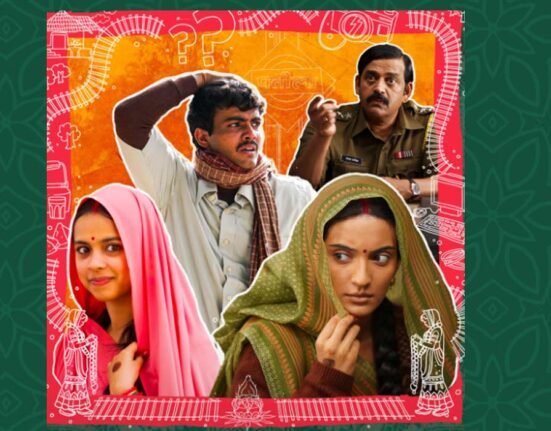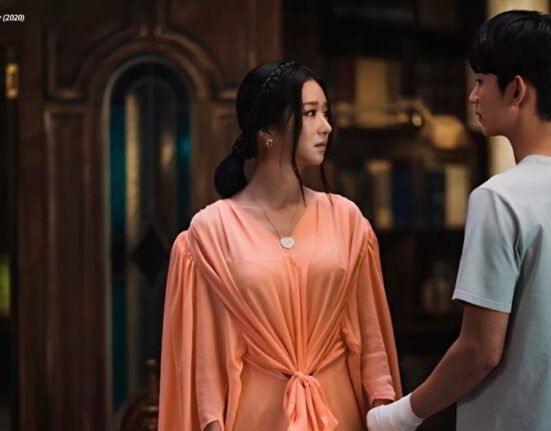There is a death instinct within the sexual instinct.
Sabina Spielrien
7 khoon maaf is a dark, wickedly humorous macabre tale about a tragic woman named Susanna and her quest for love. From Vishal Bharadwaj – Ruskin Bond duo that gave us the critically acclaimed The Blue Umbrella, came this movie, which divided its audience into extreme poles, thus accomplishing its function as art- to comfort the disturbed and vice versa. The movie refuses to contain itself in the categories of conventions as it switches between a childish riddle and Bharadwaj masterpiece, between a slow melodrama and a gripping thriller, between a layered piece de resistance and a pretentious precocious parable. And as such this movie is not everybody’s cup of tea.
7 Khoon Maaf is a psychodynamic portrait of personal growth. The plot embodies the intricate enmeshment of the death instinct and the sexual instinct through the allegory of marriage and murder. It extends the complicated storyline against the backdrop of a subtle Oedipal love between Susanna and “Sugar”. In a flashback, we are introduced to the bungalow of Susanna through Sugar, following the funeral of Susanna’s father.
What follows is an allegory of mind. The three servants with distinct identities work in a concerted fashion to run the household as well as to kill their husbands. An instinctive mother like Maggie Aunty, A scheming, authoritative Ghalib Khan and a speech impaired (and later blind) yet skilful Goonga Chacha are parallel to the Freudian structures of personality: Id, Ego and the Superego. They have a snake shrine deep inside a well, an open doorway to the unconscious. In this household lives the charming, alluring Susanna. She is the soul, the life force and in her, the death instinct sleeps dormant.
The story then develops through Susanna’s 6 marriages and the subsequent murders. Each husband was a deadly sin personified. In her quest for true love, laced with the subtleties of an underlying Electra-complex, she encounters the different shades of her Animus, the masculine element or soul image of women, according to Jung. The murder of these husbands was a symbolic failure of individuation on the part of the self. This hinders the psychological union of the opposites which thwarts growth and individuation.
These repeated failures result in cumulatively adding chaos into Susanna’s world. Her health deteriorates and she becomes suicidal. Through her various encounters with death, she loses Ghalib Khan and Maggie Aunty to death. Towards the end of the story, we see a very old Goonga Chacha being fed by “Sugar”. This is the symbolic representation of individuation whereby the elements of the Psyche are incorporated into the self.
Meanwhile, Susanna is thought to be dead by all, except Sugar. This symbolic death and rebirth of the soul is akin to the process of individuation that Jung describes as analogous to the alchemy of the philosopher’s stone.
The plot has a rich biblical subtext. Apart from the obvious seven deadly sins and the message of atonement, it draws parallels to the stories in Genesis. Just as God rests after the 6 days of creation. Susanna rests on the Sabbath of God – after the 6 marriages. The story of Susanna is parallel to the stories of Genesis, from Adam and Eve to Noah, whom God had chosen, but ends up repeating the sins. The end of these stories culminates in the story of Messiah and the Promised Land. After repeated disappointments in her pursuit of love, Susanna finally understands that God is love.
In the end, we see Susanna in the confession box ready to confess her seven sins. She is no longer defensive and is ready to proclaim and own her story. She has crossed the 5th layer of neurosis and is embracing her explosive growth. This is where the story develops its dynamic form as the question of the sins arises. Considering the entire story from a psychodynamic perspective opens up the possibility of the seven sins manifested through the several characters and encountered by the self on its way to actualization. But the ambiguity around the sins offers multiple interpretations. This is where the story of 7 Khoon Maaf elevates itself to be an inexhaustible source of meaning and excel as art.













Leave feedback about this